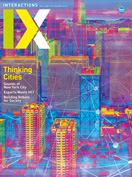Authors:
Rashida Richardson, Eric Corbett
At this juncture, pointing out the tendency for modern artificial intelligence (AI) and machine learning (ML) technologies to perpetrate various "-isms" (racism, sexism, colonialism, etc.) is uncontroversial. Among these issues, the intersections of ML and racism have received the most attention, in both popular press and academic discourses. Yet while racist AI is increasingly well documented, its spatial aspect has not received the attention it should. Instead, the manifestation of racism in ML is often framed nonspatially—as a cultural, political, or philosophical phenomenon—where space is simply the backdrop where these temporal concepts unfold. In contrast, legal scholar Rashida Richardson's…
You must be a member of SIGCHI, a subscriber to ACM's Digital Library, or an interactions subscriber to read the full text of this article.
GET ACCESS
Join ACM SIGCHIIn addition to all of the professional benefits of being a SIGCHI member, members get full access to interactions online content and receive the print version of the magazine bimonthly.
Subscribe to the ACM Digital Library
Get access to all interactions content online and the entire archive of ACM publications dating back to 1954. (Please check with your institution to see if it already has a subscription.)
Subscribe to interactions
Get full access to interactions online content and receive the print version of the magazine bimonthly.






